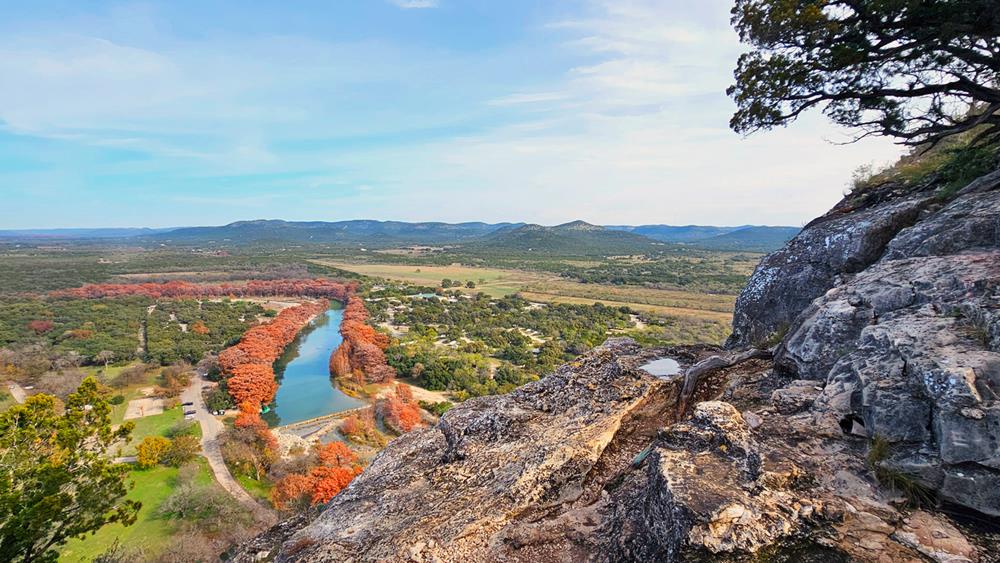Outdoor Digital Arts: Texas Installations in State Parks

You'll find select Texas state parks integrating digital media with nature to create fresh, outdoor art experiences. Interactive light pieces appear during special programs, while augmented reality (AR) adds virtual scavenger hunts and cultural layers to existing trails.
Solar-supported pop-up projections enable after-dark interpretive programs, and soundscape installations draw on field recordings or ecological data. These tools make natural heritage more accessible and support conservation education—opening new ways to experience Texas's diverse landscapes.
Augmented Reality: Enhancing Texas Park Visitor Experiences
https://www.youtube.com/watch?v=G0eKzU_fV00
While traditional park experiences center on natural splendor, the Texas Parks & Wildlife Department (TPWD) and partners are piloting AR content that blends digital elements with the physical environment.
Using your smartphone, you can join virtual scavenger hunts tied to a park's themes or view AR tour overlays that place historical and cultural context directly onto the landscape. These app-based features can also improve accessibility for visitors with mobility or sensory needs and help diversify park audiences.
TPWD continues expanding these offerings through collaborations and small grants, encouraging projects that broaden participation and environmental awareness in Texas state parks.
Blending Nature and Technology: Digital Art Installations Across Texas Parks
As AR reshapes interpretation, physical digital art now appears in open-air settings alongside traditional works—especially during exhibitions, festivals, or centennial-related events. Across Texas's ecological regions you may encounter:
- Interactive light pieces that respond to visitor proximity or scheduled cues during ranger-led evenings
- Solar-assisted projection nights showcasing nature-inspired visuals or community submissions
- Digital photo stations that invite visitors to contribute images to collective park stories
- Audio walks that translate environmental recordings and ranger narratives into layered sound experiences
These efforts complement community-focused Arts-in-the-Parks programming while embracing technologies that keep Texas's natural heritage engaging and inclusive.
The Evolution of State Park Exhibitions from Traditional to Digital Media
Early park art centered on traditional media—oil, watercolor, and charcoal capturing Texas vistas—highlighted recently by the Art of Texas State Parks project featuring 30 commissioned artists. Today, interpretation increasingly includes immersive digital components.
TPWD, partner museums, and the Texas State Library & Archives host online galleries, digitized collections, and virtual tours so you can explore park stories 24/7. The recent centennial (2023) marked a milestone in expanding online access and multimedia narratives that connect natural history—from Indigenous lifeways to CCC-era park building—to your in-person visits.
Interactive Digital Storytelling: Preserving Texas Park Ecosystems
Through mobile apps, interactive kiosks, and web-based content, Texas parks showcase wildlife and habitats in ways that aid learning and resource stewardship. You'll see:
- Digital narratives highlighting species of concern (e.g., ocelots, black bears) and restoration work
- Place-based stories that incorporate Indigenous knowledge and local materials
- Mobile-friendly platforms that share alerts and best-practice guidance for fragile sites
- Student and university collaborations that co-create content and field guides
Community engagement grows as visitors interact with multimedia about flora, fauna, and geology. Centennial commemorations and time-capsule documentation have been captured through digital archives to preserve stories for future generations—reinforcing that interactive formats help messages stick.
Collaborative Frameworks: Universities, Artists, and Park Conservation
Texas state parks work with universities and artists at the intersection of education, creativity, and conservation. Campuses across the state host park-inspired shows, develop interdisciplinary curricula, and support artist residencies that let creators immerse in the landscapes they interpret.
The modern tradition of art in Texas parks traces strongly to the 1930s CCC era, and today's collaborations update that legacy with digital production, expanded access, and research-driven storytelling. The resulting works double as visitor education and historic documentation, making conservation messages memorable through aesthetics as well as science.
Funding the Digital Frontier: Partnerships for Outdoor Tech Installations
The financing landscape for outdoor digital art has broadened, offering new avenues for artists and conservation partners. Potential sources include:
- The Centennial Parks Conservation Fund (investment earnings supporting state park enhancements)
- TPWD local grants that often provide 50% matches for eligible government partners
- Private foundations and NEA grants that back community-engaged digital media projects
- Competitive public-art programs that prioritize accessibility and educational outcomes
New and expanding sites—such as Palo Pinto Mountains State Park and other recent acquisitions—create fresh opportunities to integrate digital interpretation as Texas's park system grows. All projects must meet accessibility standards and demonstrate clear public benefit.
Accessibility and Education Through Digital Art in Natural Spaces
As landscapes and technology converge, visitors of all abilities can explore Texas state parks in richer ways. Interactive kiosks and AR/VR tours support those with limited mobility; partnerships with organizations such as Art Spark Texas promote inclusive arts participation.
The Art of Texas State Parks exhibition (with its 30 Texas artists) deepens understanding of park ecosystems and history, and companion online resources extend learning beyond gallery walls. Digital art workshops connect visitors to nature through technology, while multisensory exhibits visualize ecoregions and Texas history—turning a park visit into an interactive journey through the state's natural heritage.




